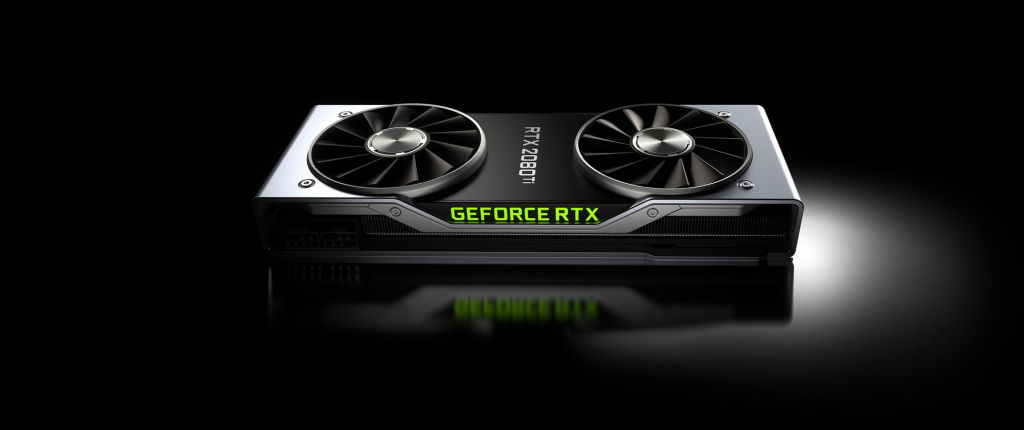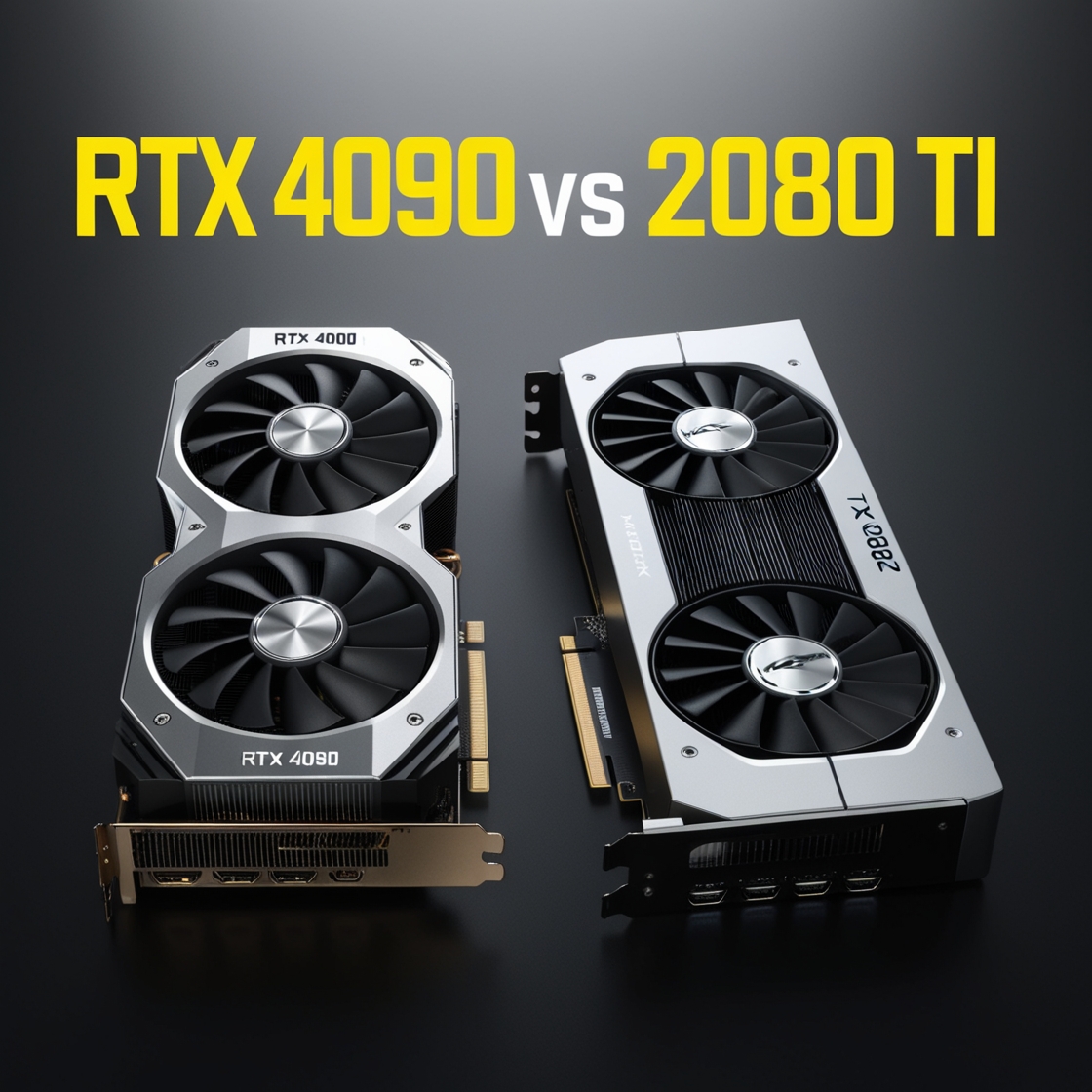Imagine stepping into the world of high-end gaming and professional graphics with the latest technology at your fingertips. With the launch of NVIDIA’s GeForce RTX 4090, the landscape of graphics cards has dramatically shifted. This article delves into a detailed comparison between the RTX 4090 and the RTX 2080 Ti. You’ll be able to understand how far GPU technology has come and what sets these two graphics cards apart.
The Evolution of GPU Technology
The GPU market has seen incredible advancements over the years. From the introduction of real-time ray tracing with the RTX 2080 Ti in 2018 to the groundbreaking improvements of the RTX 4090 in 2023, NVIDIA has consistently pushed the envelope in graphics performance. The RTX 2080 Ti was a major leap forward with its Turing architecture, offering impressive real-time ray tracing and AI capabilities. Now, the RTX 4090, built on the Ada Lovelace architecture, represents a new pinnacle of GPU technology, promising unprecedented levels of performance and efficiency.
The Progression from Turing to Ada Lovelace
NVIDIA’s journey from the Turing architecture of the RTX 2080 Ti to the Ada Lovelace architecture of the RTX 4090 marks a significant technological evolution. The RTX 2080 Ti’s Turing architecture introduced real-time ray tracing and AI-driven features, revolutionizing the graphics industry. The Ada Lovelace architecture of the RTX 4090 advances these features, incorporating increased core counts, higher clock speeds, and enhanced memory bandwidth to deliver superior performance.
The RTX 2080 Ti: A Retrospective

Specifications and Performance
Launched in 2018, the GeForce RTX 2080 Ti was a flagship GPU that set new standards with its impressive specs:
- CUDA Cores: 4,352
- Base Clock: 1,350 MHz
- Boost Clock: 1,545 MHz
- Memory: 11 GB GDDR6
- Memory Bandwidth: 616 GB/s
- RT Cores: 68
- Tensor Cores: 544
The RTX 2080 Ti excelled in delivering exceptional performance for 1440p and 4K gaming and proved its worth in professional applications like 3D rendering and video editing.
Legacy and Market Impact
The RTX 2080 Ti’s introduction of real-time ray tracing and AI capabilities significantly influenced the GPU market. Consequently, it set a new benchmark and encouraged the adoption of advanced technologies in gaming and professional software.
The RTX 4090: Redefining Performance

Specifications and Features
The GeForce RTX 4090, NVIDIA’s latest flagship, features state-of-the-art technology:
- CUDA Cores: 16,384
- Base Clock: 1,875 MHz
- Boost Clock: 2,520 MHz
- Memory: 24 GB GDDR6X
- Memory Bandwidth: 1,008 GB/s
- RT Cores: 128
- Tensor Cores: 512
This GPU sets new performance standards for 4K and 8K gaming, offering unparalleled frame rates and graphical fidelity. It is optimized for high-end 3D rendering and complex AI computations.
Technological Innovations
The RTX 4090 introduces several advancements, including third-generation RT cores and fourth-generation Tensor cores. These innovations enhance ray tracing and AI performance, while improved memory bandwidth and efficiency ensure top-tier performance across all applications.
Detailed Comparison
| Feature | RTX 2080 Ti | RTX 4090 |
|---|---|---|
| Performance Ranking | 36 | 2 |
| Architecture | Turing (2018-2021) | Ada Lovelace |
| GPU Code Name | Turing TU102 | AD102 |
| Market Segment | Desktop | Desktop |
| Release Date | August 27, 2018 | December 28, 2023 |
| Launch Price (MSRP) | $999 | $1,599 |
| Pipelines / CUDA Cores | 4,352 | 16,384 |
| Base Clock Speed | 1,350 MHz | 1,875 MHz |
| Boost Clock Speed | 1,545 MHz | 2,520 MHz |
| Number of Transistors | 18.6 billion | 76.3 billion |
| Manufacturing Process | 12 nm | 5 nm |
| Power Consumption (TDP) | 270 Watts | 425 Watts |
| Memory Type | GDDR6 | GDDR6X |
| Memory Amount | 11 GB | 24 GB |
| Memory Bandwidth | 616 GB/s | 1,008 GB/s |
| Display Connectors | 1x HDMI, 3x DisplayPort, 1x USB Type-C | 1x HDMI 2.1, 3x DisplayPort 1.4a |
Architectural Differences
The RTX 2080 Ti’s Turing architecture was groundbreaking for its time, offering real-time ray tracing and AI capabilities. However, the Ada Lovelace architecture of the RTX 4090 enhances these features significantly, with more cores and higher clock speeds, making it the superior choice for modern gaming and professional applications.
Ray Tracing and AI Advancements
Ray tracing technology has evolved considerably from the RTX 2080 Ti to the RTX 4090. The RTX 4090’s third-generation RT cores provide more realistic lighting and reflections, while the fourth-generation Tensor cores improve AI performance with better frame rates and image quality through DLSS.
Memory and Bandwidth
The RTX 4090’s 24 GB of GDDR6X memory and 1,008 GB/s memory bandwidth represent a substantial upgrade over the RTX 2080 Ti’s 11 GB GDDR6 memory and 616 GB/s bandwidth. This increase allows for handling more complex textures and faster data transfer rates, crucial for high-resolution gaming and demanding applications.
Power Consumption and Cooling
With a TDP of 450 watts, the RTX 4090 requires more power and robust cooling solutions compared to the RTX 2080 Ti’s 270 watts. The higher power consumption of the RTX 4090 is balanced by advanced cooling mechanisms to maintain optimal performance.
Software and Ecosystem
Both GPUs are compatible with a wide range of software, including gaming engines and professional applications. The RTX 4090 benefits from optimizations for newer software and features, enhancing performance and efficiency.
Use Cases and Future-Proofing
The RTX 2080 Ti remains a solid choice for gamers and professionals seeking performance at a more affordable price. On the other hand, the RTX 4090 is ideal for those who need top-tier performance for 4K and 8K gaming and demanding professional tasks.
Cost Analysis
The RTX 2080 Ti offers excellent value for its price, while the RTX 4090, despite its higher cost, provides superior performance that justifies the investment for those requiring the highest capabilities.
Conclusion
Choosing between the GeForce RTX 2080 Ti and RTX 4090 depends on your specific needs and budget. The RTX 2080 Ti delivers strong performance at a lower cost, while the RTX 4090 offers unparalleled power for the most demanding applications. Understanding the strengths and differences of each GPU will help you make an informed decision that best suits your requirements.
By following these insights, you can navigate the world of high-performance GPUs and select the one that will best meet your needs and elevate your gaming or professional experience.

Leave a Reply
You must be logged in to post a comment.